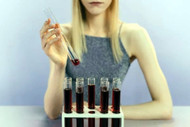Blood Doping
Feb 1st 2023
Blood doping is an unlawful method for enhancing athletic execution by falsely boosting the blood's capacity to convey more oxygen to muscles.
As a rule, blood doping builds the measure of hemoglobin in the circulation system. Hemoglobin is an oxygen-conveying protein in the blood. So expanding hemoglobin permits higher measures of oxygen to reach and fuel a competitor's muscles. This can enhance stamina and execution, especially in long-separate occasions, for example, running and cycling.
Blood doping is banned by the International Olympic Committee and different sports associations.
Sorts of Blood Doping
The three generally utilized sorts of blood doping are:
- blood transfusions
- infusions of erythropoietin (EPO)
- infusions of manufactured oxygen transporters
Here are some more insights about each of these sorts of blood doping:
Blood transfusions. In ordinary medicinal practice, patients may experience blood transfusions to supplant blood lost because of harm or surgery. Transfusions additionally are given to patients who experience the ill effects of low red platelet numbers brought about by pallor, kidney disappointment, and different conditions or medicines.
Illegal blood transfusions are utilized by competitors to help execution. There are two sorts.
Autologous transfusion. This includes a transfusion of the competitor's own blood, which is drawn and afterward put away for future utilization.
Homologous transfusion. In this sort of transfusion, competitors utilize the blood of another person with the same blood classification.
EPO infusions. EPO is a hormone created by the kidney. It manages the body's generation of red blood cells.
In medical practice, EPO injections are given to stimulate the production of red blood cells. For example, a synthetic EPO can be used to treat patients with anemia related to chronic or end-stage kidney disease.
Athletes using EPO do so to encourage their bodies to produce higher than normal amounts of red blood cells to enhance performance.
Synthetic oxygen carriers. These are chemicals that have the ability to carry oxygen. Two examples are:
- HBOCs (hemoglobin-based oxygen carriers)
- PFCs (perfluorocarbons)
Synthetic oxygen carriers have a legitimate medical use as emergency therapy. It is used when a patient needs a blood transfusion but:
- human blood is not available
- there is a high risk of blood infection
- there isn't enough time to find the proper match of blood type
Athletes use synthetic oxygen carriers to achieve the same performance-enhancing effects of other types of blood doping: increased oxygen in the blood that helps fuel muscles.

